BLOG | Bluephage
“We help water analysts ensure the absence of disease-causing pathogenic viruses.”
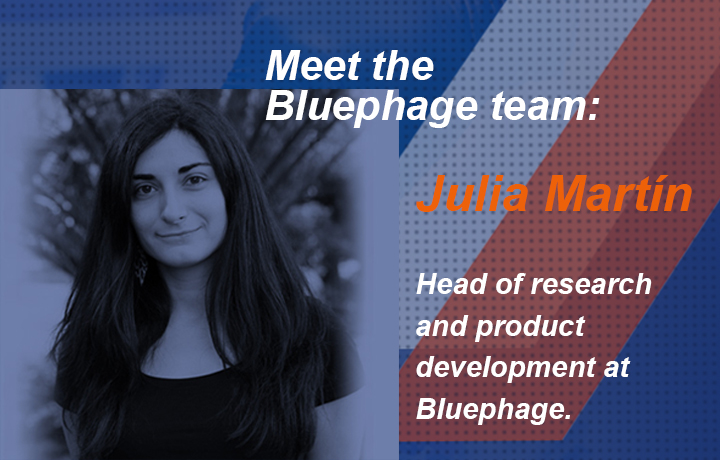
Meet the Bluephage team: Interview with Julia Martín
The Bluephage team is composed of different professional profiles. However, the most prominent is the team of researchers and product developers who secure the creation of innovative solutions to improve the water industry performance, thus ensuring water security for society.
Today we talk to Julia Martín, head of research and product development at Bluephage, and Ph.D. in Environmental Microbiology and Biotechnology (UB), with extensive experience in microbiological assessment of water quality and the use of bacteriophages as indicators of fecal contamination in the water cycle.
What kind of work do you perform at Bluephage? What is your day-to-day work in the lab?
Our department’s essential task is to transform the available scientific knowledge and know-how into tangible products and services. Once we have a product, we ask ourselves how we can improve it so that it is always up to date and meets the needs of the moment, or if the solution is to devise another more specific product to meet another demand. An example would be the Easy Kit for somatic coliphages for 1 mL, which reproduces the method described in ISO 10705-2. Once we had this kit ready, we set out to find a solution for analyzing low-contaminated samples such as drinking water, as more and more European and international regulations required the analysis of coliphages, so we were able to launch the Easy Kit for 100 mL.
My daily routine consists of designing and carrying out, together with the rest of my lab mates, the experiments needed at any given time. This means that we constantly ask each other questions and look for solutions, so team meetings are commonplace. I also liaise with manufacturers, passing on the knowledge we generate in the lab so that they can incorporate it into the products. Another task is advising customers when they have technical or scientific questions.
Before Bluephage, in 2012, you worked with the Health-Related Water Microbiology group at the University of Barcelona. During this time, you developed your thesis, “Utility of bacteriophages and other indicators of fecal contamination in solid environmental samples.” Your relationship with the group continues nowadays as an associate professor.
Can you explain your experience with this group, and your relationship, over the years, with the coliphages?
In the University of Barcelona’s group, I had the opportunity to learn the basics of scientific research. I still remember the first time Francisco Lucena, head of the group, told me about coliphages, and I had to ask him to explain what they were. I started my master’s thesis with a very nice study on the great diversity of somatic coliphages and their different morphologies and how the various water treatments end up selecting one morphological type or another. Then came the opportunity to do my thesis. With it, I was able to deepen the relationships that can be established between pathogenic viruses and indicator coliphages throughout the water cycle in samples of river sediments and sewage sludge.
The Bluephage product portfolio offers two more straightforward, faster, and more cost-effective alternatives to perform F-specific and somatic coliphage detection and quantification, respectively, according to ISO and US-EPA standardized methods.
What do we mean when we say simpler, faster, and more cost-effective than traditional and standard processes?
Although standardized methods are easy to carry out, they require very solid specific prior training. In addition, quality controls are necessary to prepare, conserve, and validate stocks of host bacteria and coliphages with sufficient guarantees. All this requires time, dedication, and personnel training, which ultimately translates into high costs. Our Easy Kits contain all the necessary components to analyze samples in a matter of hours and obtain results after overnight incubation, following 12 simple steps.
Easy Kits can be applied to drinking water, reclaimed water, raw and treated wastewater, surface water, recreational water, shellfish extracts, sediment, and sludge extracts after dilution where necessary.
What differences or other considerations need to be taken into account for each type of these samples?
When considering a water analysis, the first question to ask is the degree of contamination expected in the sample. Usually, if we are dealing with wastewater, samples from rivers with high anthropic pressure, or sewage sludge, the levels of coliphages will be high enough to dilute the sample and analyze 1 mL of the most appropriate dilutions. On the other hand, when dealing with drinking, recreational, or reclaimed water, direct analysis of a 100 mL aliquot will be required, as the expected concentrations are low. A good solution is the previous analysis of some bacterial indicators, such as coliforms or E. coli, to know the degree of fecal contamination of each new type of sample arriving at the laboratory. On the other hand, solid samples, such as sediments, biosolids, and shellfish, require prior extraction using buffered solutions and mechanical means such as agitation to “detach” the coliphages from the solid particles and transfer them to a liquid matrix for analysis. Finally, samples with a high bacterial load must be previously decontaminated by low protein adsorption filtration to avoid interference with the host strains used to detect coliphages.
Bluephage Easy Kit for the Enumeration of Coliphage Specific F. The method is based on US-EPA 1642, US-EPA 1643
Bluephage Easy Kit for the Enumeration of Somatic Coliphages. The method is based on US-EPA 1642, US-EPA 1643
There are two types of Easy kits: The BP1601 – Easy kit for somatic coliphages, for samples containing a large number of bacteria and based on ISO 10705-2 and the double agar layer (DAL) method, and the BP1604 – Easy kit for somatic coliphages, also based on ISO 10705-2 and in this case the single agar layer (SAL) method, and for samples with expected low bacteriophage counts.
What does it mean that they are “all-in-one” and “ready-to-use” kits?
Bluephage Easy Kits contain all the culture media, additives, and other materials needed for analysis and, most importantly, the stocks of host bacteria and coliphages in freeze-dried format. Our team has already validated these stocks and contains the relevant quality certificates so that the user only has to worry about opening the vials and using them.
The new European Drinking Water Regulation requires testing if starting water contains coliphages at more than 50 plate-forming units per 100 mL of aliquot.
Does Bluephage’s analysis methods take these measurements into account, and why have they determined this measure when previously only bacterial indicators were required to be analyzed?
For decades, the scientific community has been showing us how pathogenic viruses are generally more resistant than bacteria, both to environmental factors and to the usual water treatments. They are also more dangerous because their infective dose is lower than that of bacteria, i.e., they can generate infections with much lower initial concentrations. Therefore, a proper assessment of drinking water quality must include viral indicators to ensure that the purification process is effective against both bacteria and viruses. Our specific Easy Kits for clean water are quantitative methods that calculate the concentration of coliphages directly in 100 ml of sample, without the need for previous concentration steps.
Bluephage has recently been recognized with the B Corp certification, becoming one of the first 100 Spanish companies to obtain this recognition. Being a B Corp means that the company pursues a purpose beyond the economic one and plans to impact society and the environment positively.
So what does Bluephage’s purpose of providing Safe Water for a Better World mean to you?
With our products and the consulting, training, and research services we offer, we help water analysts to ensure that the water is free of disease-causing pathogenic viruses. Thus, through our Safe Water for a Better World purpose, we do our bit to meet the United Nations Sustainable Development Goal No. 6: Ensure availability and sustainable management of water and sanitation for all.


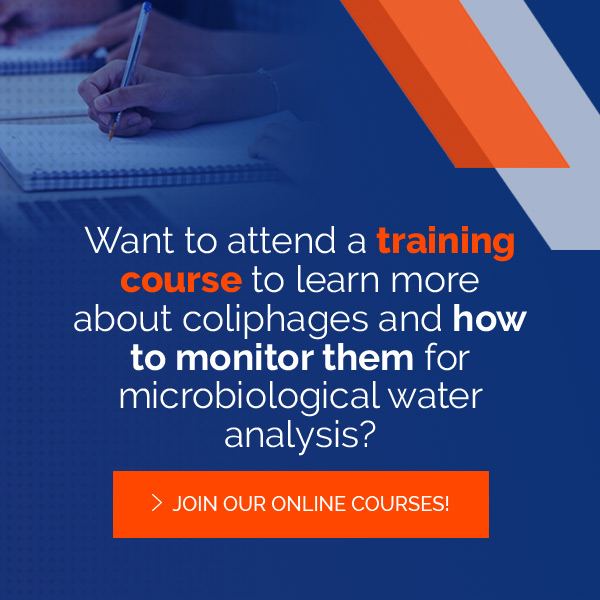
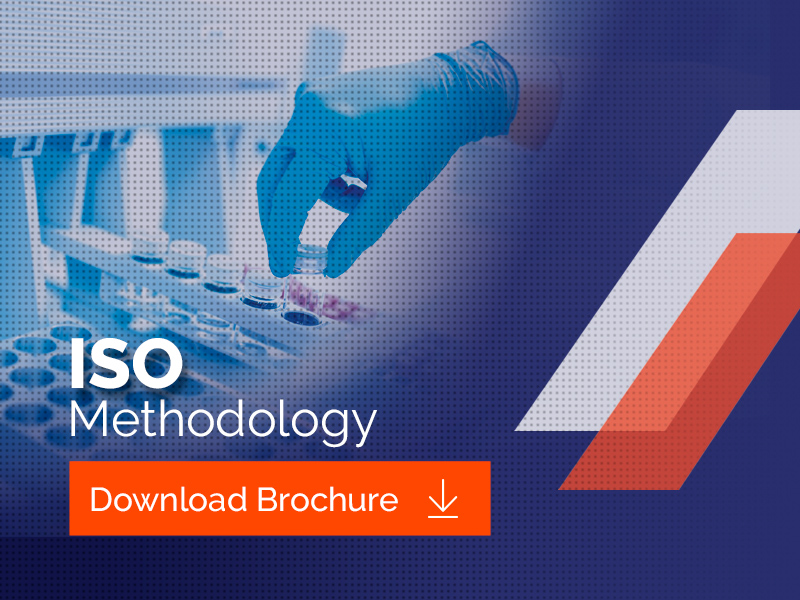
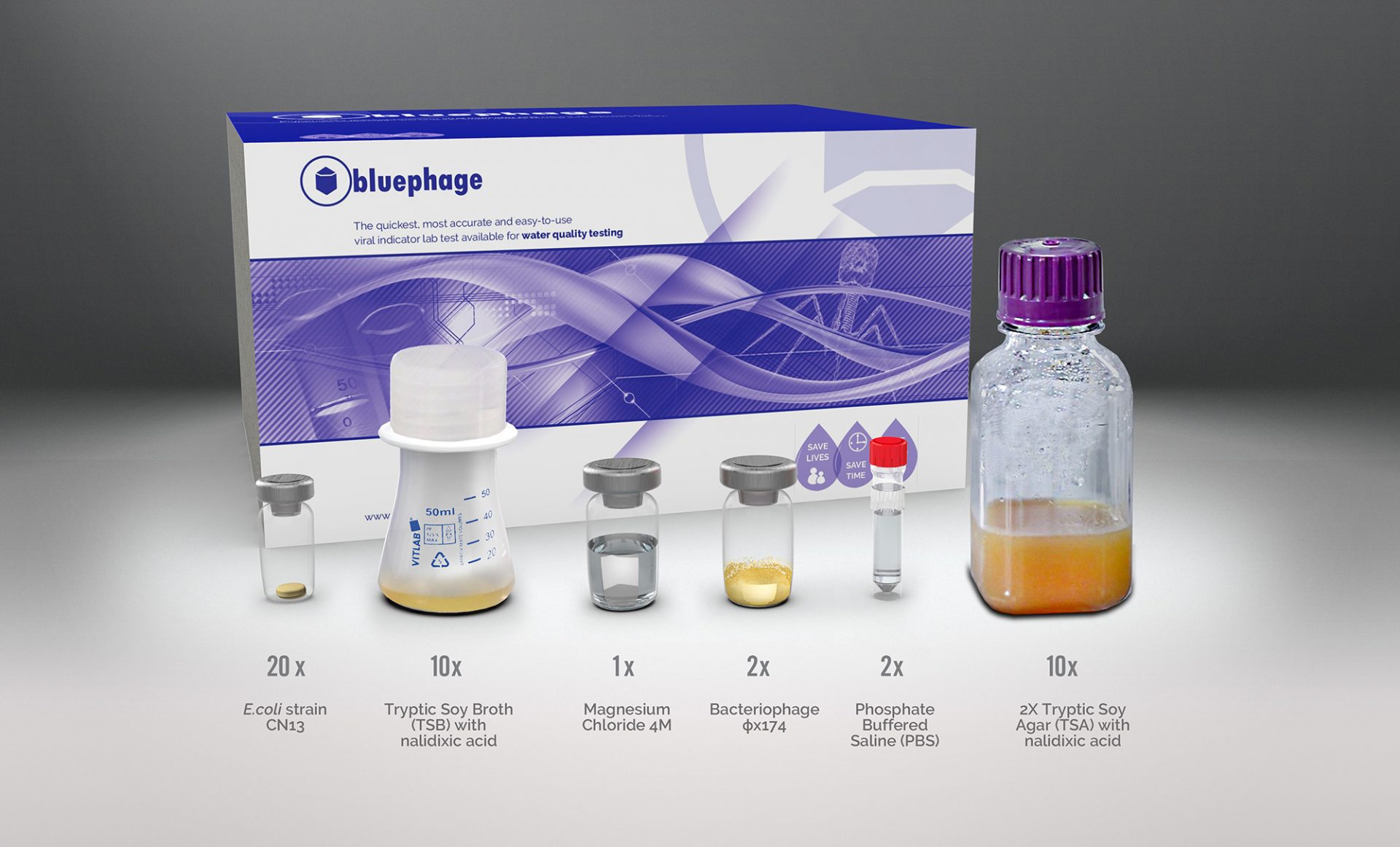
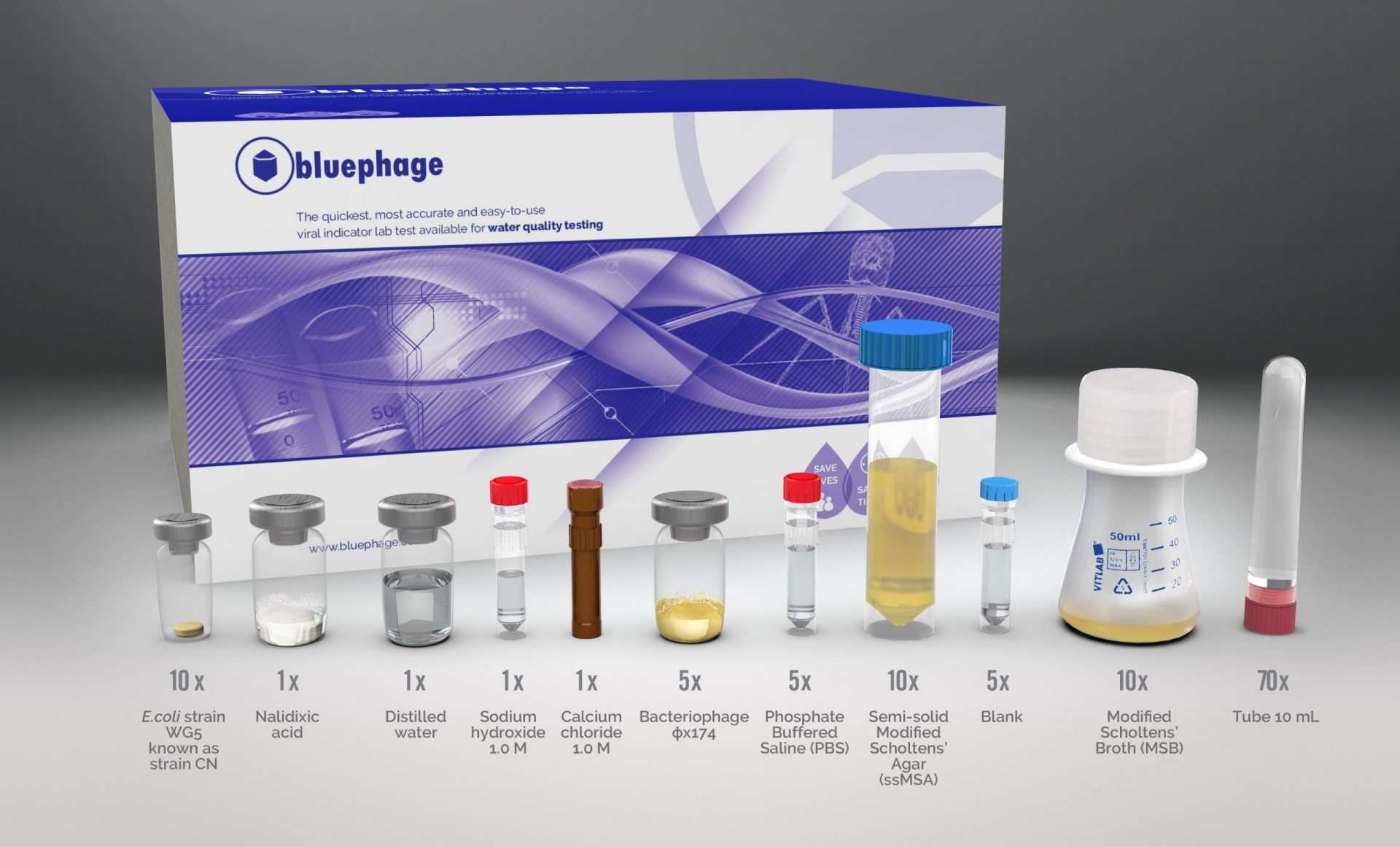
Trackbacks/Pingbacks